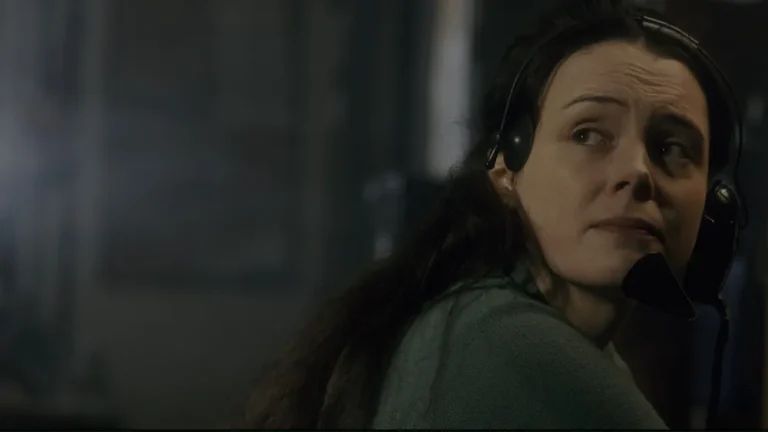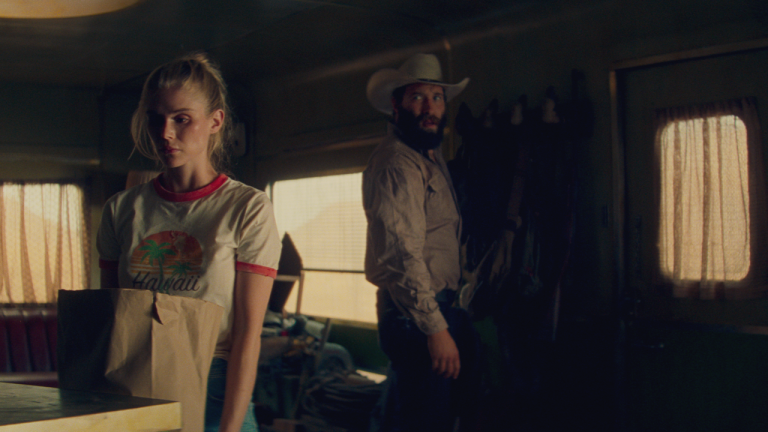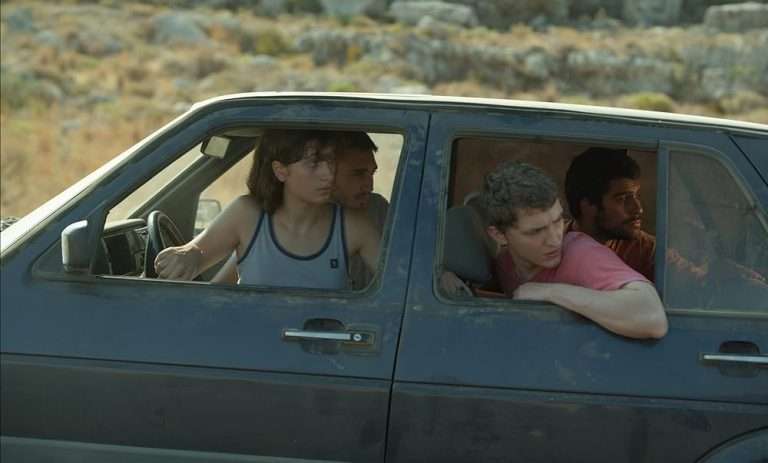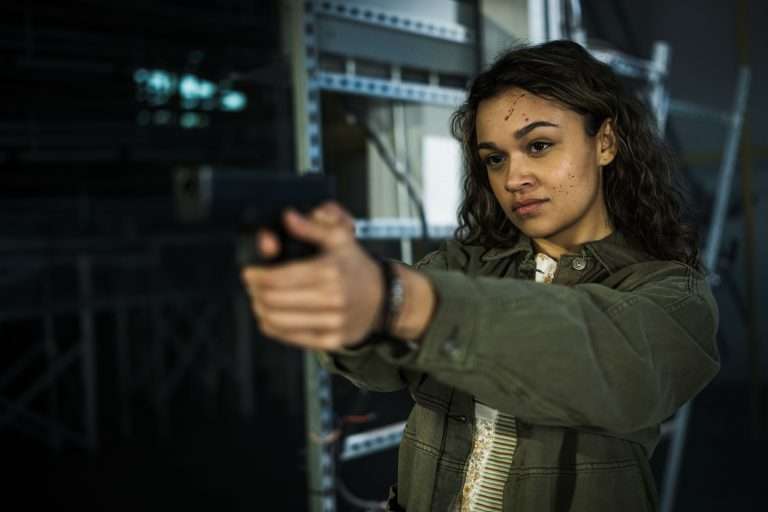The 1970s & 1980s were the defining decades of the horror genre – filmmakers doused their films with oozes of gore, created serial killers who defied reason and rationality with their senseless murders, and gutted our screens with daggers and chainsaws. This twilight zone of the sleepy domestic town, rife with midnight mist and shapeless figures, became a staple for modern horror. Every horror film you’ve seen in the last 25 years was molded and shaped by the hands of predecessors Craven, Carpenter, and Rosenberg. And, when director Ti West created “The House of the Devil,” he called for their spirits to rise – and to haunt his film with every trick they had.
Despite its 2009 release date, “The House of the Devil” was meant to be a looking glass; by observing it, we would transcend our 21st-century shackles to return to the bloodied grain of the 80s horror flick. West, who would go on to direct the ‘X’ film trilogy starring Mia Goth, intended this film to stand amongst the greats by mirroring them in every way he could. The story, infused respectively with elements of the slasher and haunted house genres, is framed around the ‘satanic panic’ of the 1980s – a time when many across America feared the apparent rise of violence, linked to the occult.
We follow college student Samantha (played by Jocelin Donahue), who takes a babysitting job to pay for her new apartment. Arriving at the house, accompanied by her best friend Megan (Greta Gerwig), she meets the Ullman family. Mr Ulman (Tom Noonan) reveals to her that the family has no child – Samantha will be babysitting his mother. As Megan and the Ullman family leave, Samantha is alone in the house, and slowly, she begins to discover the family’s horrifying secret – and their plans for her.
Related Read: Maxxxine (2024): High on Star-Power, Low on Stamina
“The House of the Devil (2009)” proves that West is a learned horror fanatic. Every element of its thrill-factor is lovingly handcrafted to match that 70s and 80s framework. Shot in 16mm, the film is slow-cooked by a retro style, steeped and embalmed with the richness of antiquated static.
Thick, yellow text adorns the opening shot, stating that the film is ‘based on a true story,’ a stylistic callback to “The Texas Chainsaw Massacre.” Slow zoom-ins and outs add a voyeuristic element to the scares, putting our sole focus on our isolated heroine. Even the oak-pannelled halls of the Ulman mansion seem to mimic the Overlook Hotel of “The Shining” and Carrie’s own home. It is aesthetically so remarkable that it pulls you, ghost-like, back to those hallowed halls of Halloween classics.
West also demonstrates his proficiency with tension-building by creating a rigid yet shifting atmosphere. He adorns his films with the devouring growl of an eclipse, the barren nakedness of winter trees, and the curling tendrils of the Mother’s shaved hair. He plays with a sense of dread by intensifying every mundane sound. By removing musician Jeff Grace’s mournful piano motifs, he accentuates the echo of running water, the click of a light switch. This kind of sophisticated tension-building brings his audience to a constant state of alarm, where you’re led to believe every locked door holds a jumpscare.
West knows what he wants to serve his audience – on a plate, we are fed a feted, rotten mess, which we are made to savor with the slowest of burns. It is putrid, and yet some dark, twisted part within us craves more. But, underneath its ode to the hallmarks of horror, lies little worth placing on a pedestal.
A central part of a classic horror film’s DNA was its characters. As beacons of strength, we were able to care about their survival, even without a rich character profile. Jocelin Donahue gives The House of the Devil’s protagonist, Samantha, a doe-eyed innocence, believable as a struggling, down-on-her-luck college student, but nothing makes her character shine as her predecessors did.
She becomes little more than a footnote in the ‘Final Girl’ saga, with few memorable lines beyond the occasional cliched “get a grip.” Megan, played by Greta Gerwig, is compellingly jovial and tomboy-ish, reminiscent of familiar past slasher victims. But, she is unfortunately dropped before the film becomes truly sinister, leaving us with the arguably weaker counterpart to carry us through.
Also Read: Best Greta Gerwig Movies As an Actor/Writer/Director
The sinister Ulmans are in a similar vein. Tom Noonan and Mary Woronov’s performances as Mr and Mrs Ulman drip with terrifying ambiguity. Initially appearing commonplace yet eccentric, we are left craving more of their intimidating presence. However, they are dashed by the film’s slow pace, being reintroduced hurriedly with an infuriating lack of attention in the film’s final act.
Apart from a set of gripping characters, a successful horror film needs to keep its finger on the pulse of the audience. A director should know when to ease off, so they can ratchet it back up with a killer blow. Unfortunately, West’s preoccupation with the slow-burning aspect overcomes the eventual reveal. It crosses the line from anticipation into mundanity, as we desperately await the denouement with fading interest. Subsequently, the ultimate reveal in the film’s final minutes feels dead on arrival. We have watched Samantha pace around, open every door, and turn on every light for an ending that feels all too predictable and half-baked.
It’s clear that West is a filmmaker adept at channeling a sense of demonic darkness through his work. His film crafts its thrills with intelligence — a precise, almost surgical assault on the audience. Yet, if he hopes to ascend to the heights of the directors he so admires, he’ll need an approach that cuts even deeper.







![Sundarbaner Vidyasagar [2022] Review – Interesting premise and plot makes this show a different one from the usual thriller oeuvre](https://79468c92.delivery.rocketcdn.me/wp-content/uploads/2022/03/Sundarbaner-Vidyasagar-768x427.jpg)

